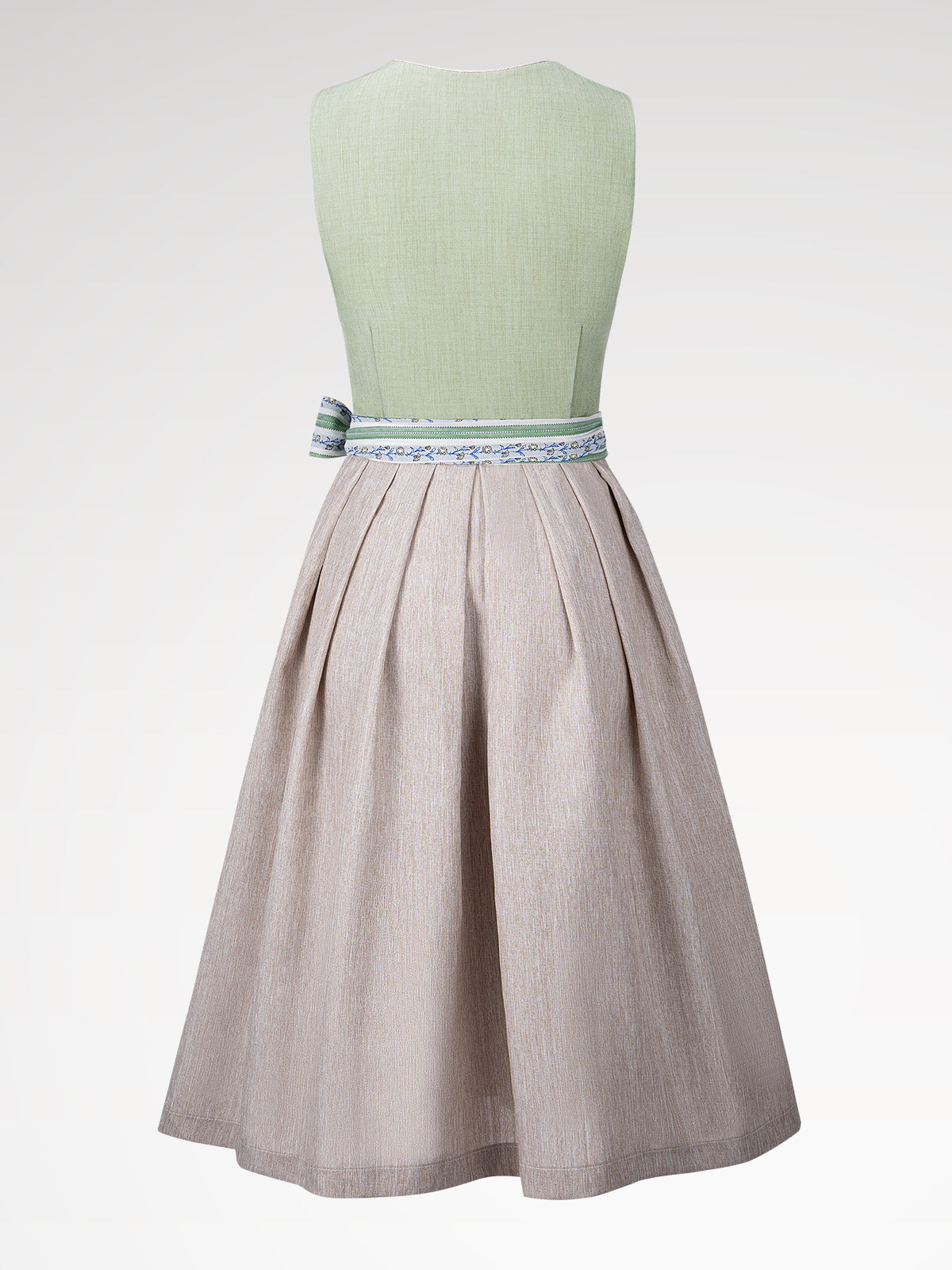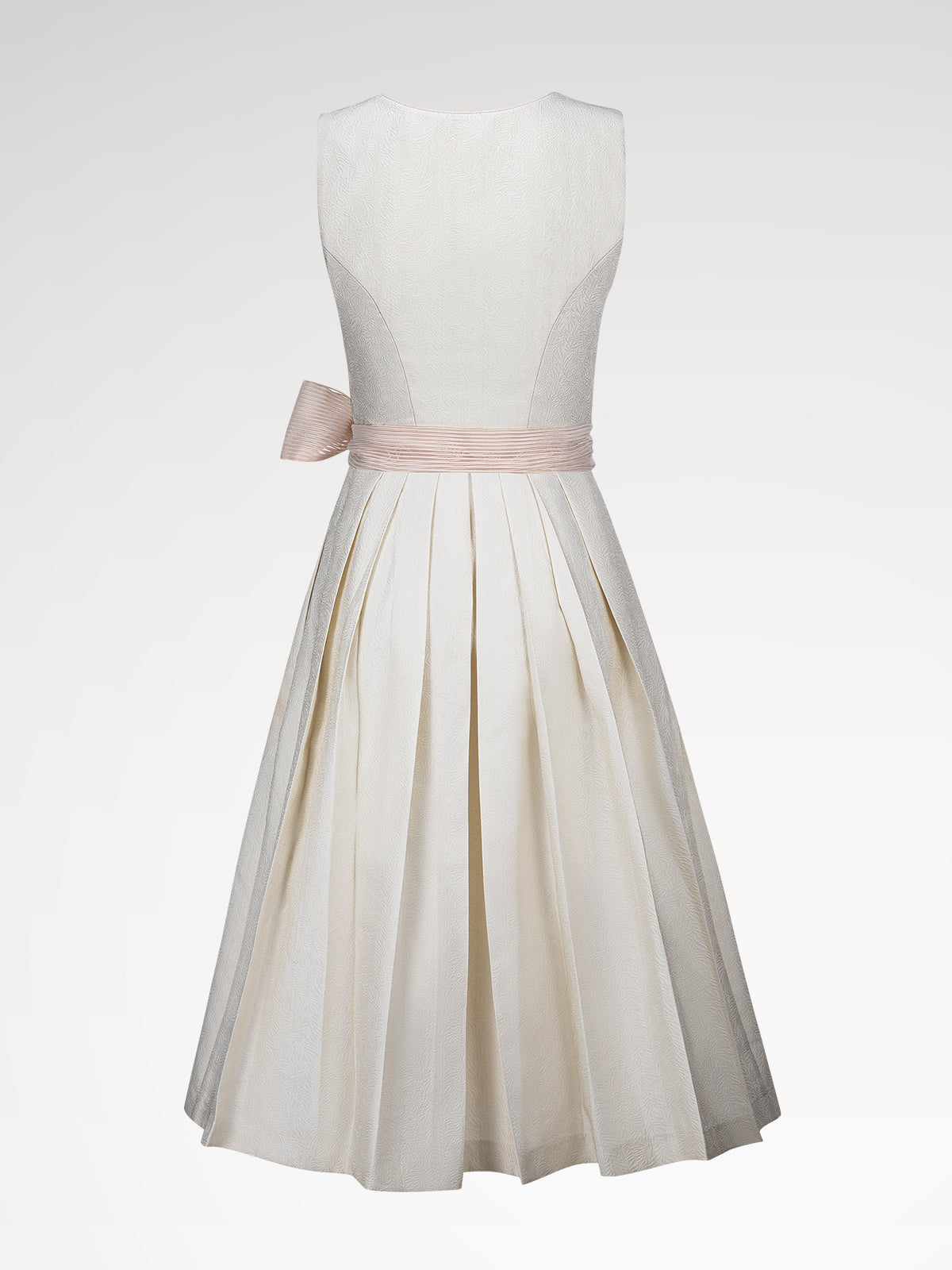Historical roots: From the field to the fashion show
1. The origins in the 19th century
The dirndl originated as a practical garment for Bavarian rural women. The olive green—made at the time from tanned hemp or vegetable-dyed wool—not only served as protection from dirt but also signaled belonging to the agricultural community. "Green was the color of survival," explains Dr. Lieselotte Meyer from the Munich Costume Archive. The aprons were simple, the blouses unembellished—functionality was paramount.
2. Adaptation by the upper class in the 20th century
In the 1930s, fashion designers transformed the dirndl into a status symbol. Aristocratic ladies had the olive green dirndl They replaced it with silk and added pearl embroidery. Queen Juliana of the Netherlands wore a green dirndl during a state visit to Bavaria in 1936—a political act that made the traditional costume internationally known. However, the olive green remained a niche product until the 1970s, worn primarily in rural areas.
3. The ecological upheaval: Green Dirndl 2.0
The decisive moment came in 2021, when Berlin designer Klara Wagner launched her collection “Dirndl of the Future” She combined the traditional pattern with organic cotton and used plant-based indigo dyes. "Today's olive green is no longer a hue—it's a manifesto," Wagner said. Her design was shown at Paris Fashion Week, and suddenly celebrities like Luna Scherer were searching for dirndl 2025 green.
Practical guide: How to wear a green dirndl without “traditional kitsch”
1. Scenario 1: Oktoberfest in the countryside
- Outfit: Light green dirndl blouse with ruffled collar + dirndl women green made from recycled polyester apron.
- Accessories: wooden bead necklace and felt hat with chamois beard made of organic bristles.
- Tip: Combine with a straw hat and espadrilles for a fresh, unconventional look.
2. Scenario 2: Wedding in the countryside
- Look: Mint green silk blouse with lace trim + walnut-colored apron.
- Hair: Updo with gemstone hairpins.
- Tip: Use the apron as table decoration – sustainable and stylish.
3. Scenario 3: Everyday Chic
- Minimalism: Olive green dirndl 2025 green made of hemp fabrics + white overshirt.
- Accessories: leather bracelet with wooden beads and sneakers.
- Tip: Wear the blouse as an overshirt – practical and cross-generational.
Color psychology: Which green suits whom?
According to a study by the Munich Color Laboratory (2023):
- Cool skin tones harmonize with olive green tones such as “moor varnish”.
- Warm skin tones emphasize light “pine green.”
- Avoid: Neon green – it looks unhealthy on light complexions.
Sensory stimuli: The Green Dirndl as a multisensory experience
Contact:
“When the fingers run over the rough linen of the dirndl women green "When you touch the fabrics, you can sense the history of the craftswomen who once wove these fabrics," writes fashion historian Friederike Koch. The coarse cloth is reminiscent of fieldwork, while the silk blouses create gentle, silky waves.
Odor:
In the beer garden, the olive green blends with the aroma of fresh greens. A visitor from Stuttgart describes it: "When my apron sweeps across the table, it smells of mint and hops – almost like a summer Sunday in the countryside."
Picture and sound:
The rustling of the dirndl 2025 green made of organic cotton reminiscent of wind through pine forests.At folk music events, this sound is combined with the sound of the zither – an acoustic contrast between nature and modernity.
Debate: Tradition vs. Innovation
Should the green dirndl be made exclusively from organic cotton? Or are recycled polyester fibers acceptable? Data published in 2023 by the Munich Traditional Costume Association reveals that 72% of Germans under 30 prefer dirndls made from sustainable materials. But critics like Josef Bauer, director of the Munich Traditional Costume Museum, warns: "If we replace handcrafting with 3D printing, we will lose the soul of traditional costume. Olive green must not become just a marketing term!"





Leave a comment
This site is protected by hCaptcha and the hCaptcha Privacy Policy and Terms of Service apply.